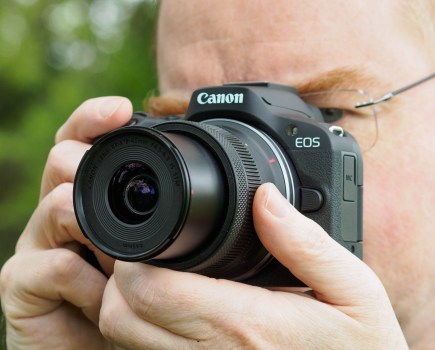Tweaks include the addition of a Long Exposure Manual mode (alongside Bulb and Time settings), to enable exposures of up to 900 seconds.
Nikon claims to have made the D810A four times more sensitive to reddish light from the H-alpha spectral line.
In a statement, Nikon explained: ‘The D810 is a popular camera with astro photographers. It has the power to photograph the night sky, but a standard camera sensor is not the best way to capture images of nebulae that emit the H-alpha wavelength.
‘In order to prevent red colour cast, the optical filters in general DSLRs restrict transmission of reddish light in the visible light range.
‘In contrast, the characteristics of the D810A’s optical filter have been modified to increase the transmission of reddish light from the hydrogen-alpha spectral line by approximately four times (compared to the D810).’
Nikon says the benefits of this modification are apparent ‘even when photographing starfields and star landscapes’.
The 36.3-million-pixel Nikon D810A features an ISO of 200-12,800 that can be extended up to 51,200. A 3D noise reduction feature enables users to produce ‘clean, well-defined images at high ISOs’, according to Nikon.
Nikon UK’s group product manager Simon Iddon said: ‘The D810A is built on the powerful, high-resolution D810 – an obvious choice considering the need for fine detail and absolute precision in this field. The D810A delivers on both counts.’
The Nikon D810A is due to go on sale at the end of May, priced £2,999.99 body only.









